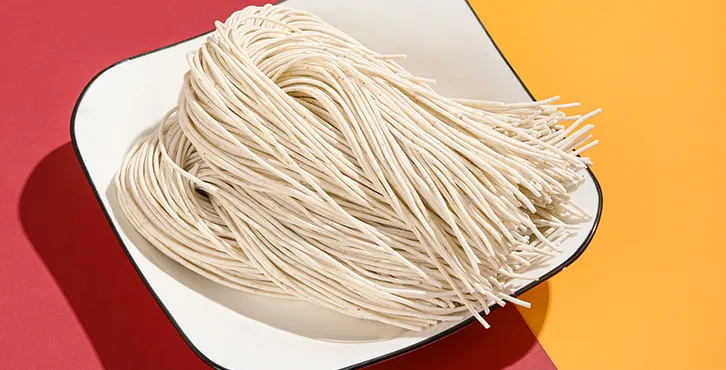Artisanal Chinese Noodles Crafted by Hand for Authentic Flavors and Textures
The Art of Chinese Handmade Noodles
Chinese cuisine is renowned for its wide variety of flavors, textures, and cooking styles, but one of its most captivating aspects is the art of handmade noodles. The process of making these noodles is steeped in tradition, requiring skill and dedication, and the results are deliciously rewarding. Whether enjoyed in a simple broth or as part of a more elaborate dish, handmade noodles embody the essence of Chinese culinary culture.
A Rich History
Noodles have a rich history in China that dates back over 4,000 years. According to historical records, the origins of noodles can be traced back to the Han Dynasty, where they were made from wheat flour. Since then, they have evolved into various forms, with different regions of China developing their own unique styles and flavors. The technique of hand-pulling noodles, in particular, showcases the dexterity and artistry involved in noodle-making.
The Hand-Pulling Technique
Hand-pulling noodles, known as la mian, is a fascinating process that transforms a simple dough of flour and water into long, elastic noodles. This technique requires both strength and finesse. To begin, the dough is kneaded until it becomes smooth and elastic. This process takes time and effort, as the goal is to create a dough that can stretch and hold its shape.
Once the dough is ready, it is divided into smaller portions, which are rolled into long ropes. The artisan then uses a combination of pulling and folding motions to elongate the strands. With each twist and turn, the dough transforms, and the noodles become thinner and more pliable. The final product is a delicate dance of unity and innovation, where tradition meets creativity.
A Celebration of Local Flavors
Handmade noodles are celebrated in various regions of China, each showcasing local ingredients and culinary traditions. For instance, in the northern provinces, noodles are often thicker and heartier, perfect for complementing rich stews and sauces. In contrast, southern regions favor thinner, lighter noodles that pair well with seafood and fresh vegetables.
chinese handmade noodles

In Xi'an, the famous biang biang noodles are wide and flat, served with spicy toppings that create an explosion of flavor. In Lanzhou, the signature beef noodles are known for their flavorful broth and tender slices of beef, garnished with fresh herbs and chili oil. Each region’s preparation of handmade noodles reflects its culture, geography, and history, creating a deliciously diverse culinary experience.
Nutrition and Versatility
Handmade noodles are not only a delight to the palate, but they also provide nutritional value. Made primarily from whole grains, they are rich in complex carbohydrates, fiber, and protein. When paired with a variety of vegetables and proteins, handmade noodles can contribute to a balanced meal.
Moreover, the versatility of handmade noodles allows them to be enjoyed in numerous ways. Whether served in a comforting broth, tossed with stir-fried vegetables, or layered in a savory noodle casserole, these noodles adapt flawlessly to different cooking styles. Their chewy texture and ability to absorb flavors make them a beloved staple in Chinese households.
The Joy of Noodle-Making
While handcrafted noodles can often be found in restaurants, the joy of making them at home is a rewarding experience. Families across China engage in noodle-making as a communal activity, bringing generations together to share stories and traditions. As families gather around the kitchen table, laughter fills the air, along with the delightful aroma of freshly made noodles.
Learning to make homemade noodles can be a fun and educational endeavor for anyone. With just a few simple ingredients—flour, water, and salt—plus a little practice, anyone can master the art of noodle-making. The result is not just a delicious meal, but a deeply satisfying connection to a rich cultural heritage.
Conclusion
Chinese handmade noodles are a testament to the time-honored traditions of Chinese cuisine. With their rich history, varied regional styles, and the artistry involved in their creation, these noodles are more than just food; they are a cultural emblem that celebrates the craftsmanship and creativity found in every strand. Whether enjoyed in a bustling restaurant or crafted in the warmth of a family kitchen, handmade noodles continue to weave their way into the hearts—and stomachs—of people around the world.
-
Unleash Your Inner Chef with Delectable Italian Pasta CreationsNewsAug.01,2025
-
Savor Health and Flavor: Irresistible Soba Noodles for Sale Await!NewsAug.01,2025
-
Nourish Your Body with Premium Organic Ramen - A Culinary Delight AwaitsNewsAug.01,2025
-
Elevate Your Dishes with Our Exquisite Kinds of Egg NoodlesNewsAug.01,2025
-
Dive into Flavorful Convenience with Our Ramen OfferingsNewsAug.01,2025
-
Discover Exquisite Types of Naengmyeon and Chilled Soba NoodlesNewsAug.01,2025
-
Is Whole Wheat Pasta Healthy?NewsMay.30,2025
Browse qua the following product new the we

















































































































